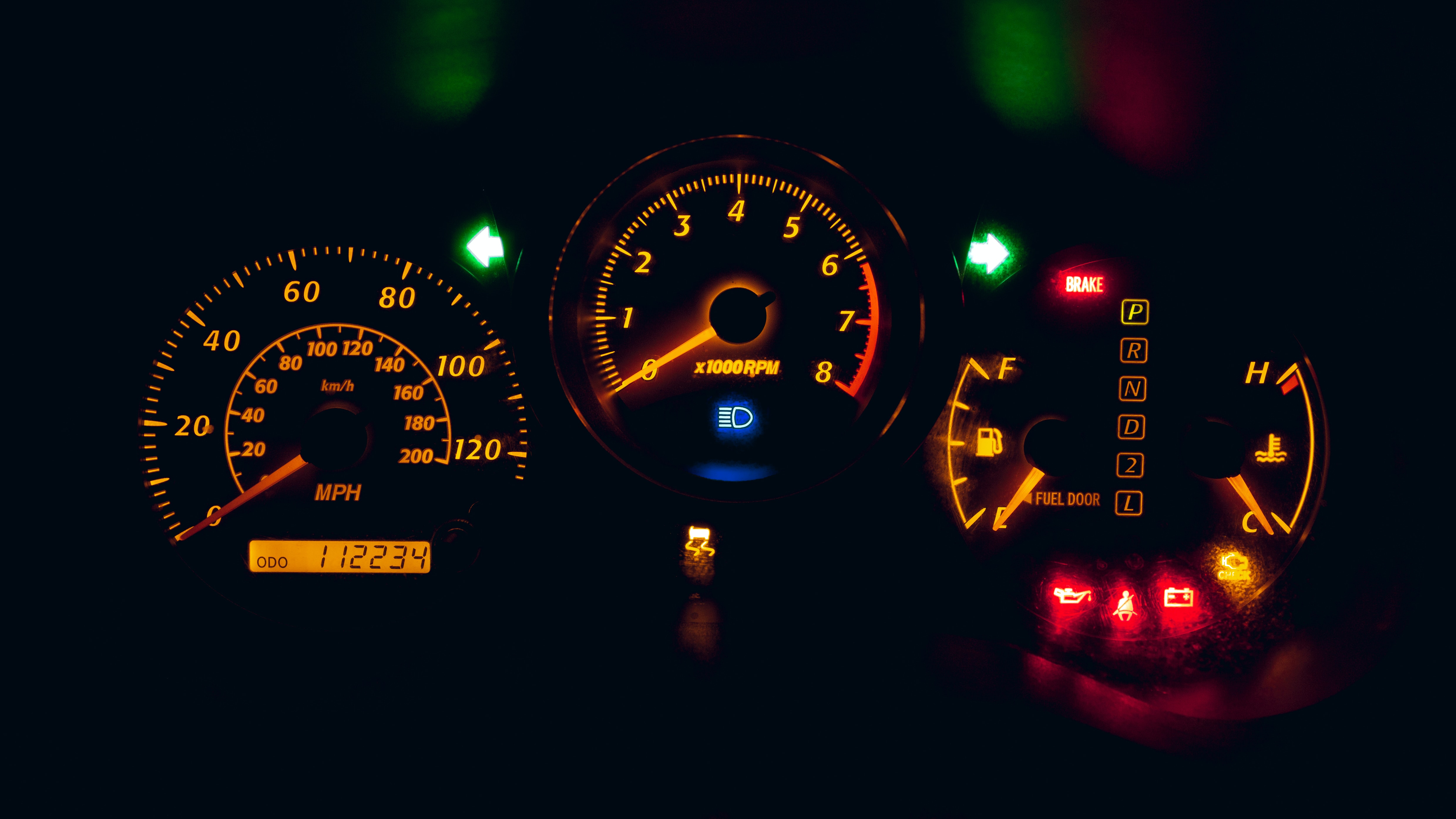
Buying a new car is not something to be undertaken lightly. Few people can afford to waste money or time these days, so the last thing one needs on top of the purchase price is the inconvenience of getting flaws corrected. If you're thinking of changing your car in the next 12 months or so, read on.
More features than you can shake a stick at
It's amazing. Cars these days have features that a driver in the 1970s would have dismissed as science fiction. Sat nav, hands-free phone calling, various degrees of autonomous driving, parking sensors, dashcams, on-board computers that control and optimise countless aspects of our cars' functionality and performance, in-car entertainment with music and video streaming … A few years ago, this was all James Bond stuff.
But progress is a funny thing: sometimes it can feel more like a step backwards than a step forwards. All these impressive bells, whistles and frills come with their own potential disadvantages built in. Manufacturers crow about ease of use and 'user-friendliness'. Operating advanced features, they tell us, is child's play. Maybe that's why so many people have to enlist the help of small children to explain how all the screens and buttons work - just like they do with their phones, tablets and coffee makers.
More problems than you can shake a fist at
Hands up all you boomers who remember the days when you could do simple maintenance and repair work to your own cars without a degree in computer science and without taking out a second mortgage to buy diagnostic equipment.
If you do a web search for common car problems, many sources put warning lights at the top of the list. Car manuals have an entire section devoted to explaining all the indicator and warning lights crammed into the limited space of your dashboard instrument panel. Nevertheless, most of us don't have any idea what many of the pretty, twinkling green, orange and red lights mean, let alone how to address the faults they may be trying to bring to our attention.
Another quick show of hands, please, from all of you who have taken your car in to have the cause of a mysterious red light identified and fixed, only to be told that the fault is in the sensor that triggered the false alarm.
"That'll be £50 for the investigation. We'll call you when we get the replacement sensor in stock. It'll be a few days and another £200. Thank you and have a nice day."
"When I were a lad…"
If all this technofear is making you feel nostalgic for simpler times, don't worry, all the OG car faults that you know and love from your earliest driving days are still alive and well: batteries still go flat overnight, alternators still fail, belts squeal, carburettors clog, wheel bearings wear out, head gaskets blow, timing belts break. Reassuring, isn't it?
Reality check
Seriously, when you consider that a car can be made from over 30,000 parts - many of them moving - it's inevitable that things will wear out and go wrong. Knowing that, it's wise to be aware of some of the most common car problems and how to avoid or, at least, delay them. We've scoured lists from top motoring sites and statistics from motoring associations, breakdown/recovery services and service/repair companies to discover the things that go wrong most frequently. Here's what we found.
Warning lights
While dashboard indicators are there to alert you to various issues (some of them serious), there are times, as we have seen, that all they warn you about is a fault in the sensor itself. Despite this, one should never ignore dashboard warning lights. If, for example, the notorious engine management light should come on (the cute little engine icon) then go to your car dealership or mechanic for advice. Never assume that it's a false alarm. A new sensor can be pricey enough: a new engine costs a lot more.
Flat batteries
A drained battery can be down to a simple oversight, such as leaving your headlights on overnight, or it can be indicative of a more serious issue. If your headlights and dashboard indicators are dim and your engine won't start, then it's a safe bet that your battery is, indeed, drained. The first thing to do is to try jump starting it with the assistance of a helpful neighbour or fellow motorist. There are plenty of YouTube videos showing the best and safest way to go about this. Everyone should have a set of jump leads in their car. They are cheap and they can save a lot of time and bother.
However, a jump start isn't always enough. If you've got your car started, been for a nice long drive to give the battery a boost but then find that it still won't retain a charge, then it could be time to replace the battery. There could also be a problem with the alternator or the charging circuit.
Bald / leaking tyres
Tyre tread should be monitored constantly. Worn tyres are dangerous and illegal.
If you have your car serviced regularly, your mechanic should flag up any impending issues with worn tyres but, just to make sure, you should also check them yourself and replace them in time to avoid trouble.
The lifespan of tyres is reduced by things like bumping or scraping kerbs, so don't drift too close to the edge of the street. Even when all looks fine, we are advised to change tyres after six years, regardless of how much or how little wear they may show.
Uneven tyre wear
If your tyres are wearing in one area rather than evenly across the whole tread surface then your wheel alignment or tracking may need adjustment. Tyres that don't distribute wear evenly across the whole road-contacting tread pattern will need replacing more quickly.
Driving close to verges on rural roads can cause premature wear to the outside edge of the tread. Grit that accumulates at the road's edge by the verge acts as an abrasive and wears away the rubber.
Steering vibration
Steering vibration or wobble can be due to an actual fault with part of the steering mechanism. It can also be caused by worn wheel bearings, uneven tyre pressures or incorrect wheel balancing.
Some 4x4 vehicles are particularly prone to steering wobble. Amongst Suzuki Jimny owners the phenomenon is melodramatically known as the 'death wobble', and it usually occurs at a fairly specific and narrow range of speeds. Drivers have learned to minimise or eliminate the issue by ensuring that their tracking is good, their wheels are properly balanced and they have well-matched tyres and tyre pressures.
Whichever car you drive, any issue with steering should be considered a potential safety hazard and is sufficient cause to warrant a proper inspection.
Rattling/knocking noises
The first thing to do if you hear a rattle or a knock is to check around your car for loose objects. Common culprits include seatbelt ends banging against side pillars and coins or other small items sliding around glove compartments. Other infamous spots for hidden noise makers are boots, footwells and underneath front seats. Drink cans rolling around under seats have reportedly prompted a surprisingly high number of unnecessary garage visits. If nothing is immediately visible then check jacks and wheel braces to make sure they are stowed securely and not rattling.
Once loose objects are eliminated as a cause, the possibility of an issue with steering, wheel bearings or suspension mean that a call to your mechanic may be in order.
Brakes
Squeaking brakes can be caused by something as trivial as a spot of oil or dirt but as your brakes can be literal life-savers, getting them checked over is never a bad idea. If you notice any change in the feel or performance of your brakes then you should definitely get them checked.
Radiator leaks/overheating
Never delay repairs to a leaky radiator. Similarly, never delay seeking help if your car begins to overheat.
A small rad leak can quickly become a big one and if you lose your coolant then your engine will overheat. If that happens then you risk much nastier and costlier complications such as a blown head gasket or even a seized engine.
Boring/unexciting number plates
Ok, to be honest, we didn't really expect to sneak this one in without anyone noticing. Nevertheless, in our honest opinion, a mundane number plate is a missed opportunity.
After all the frustrating and inconvenient problems we've listed above, don't you feel the need to rediscover the fun side of driving? Boring number plates are one of the easiest automotive flaws to put right. Find your perfect personal number plates today.
